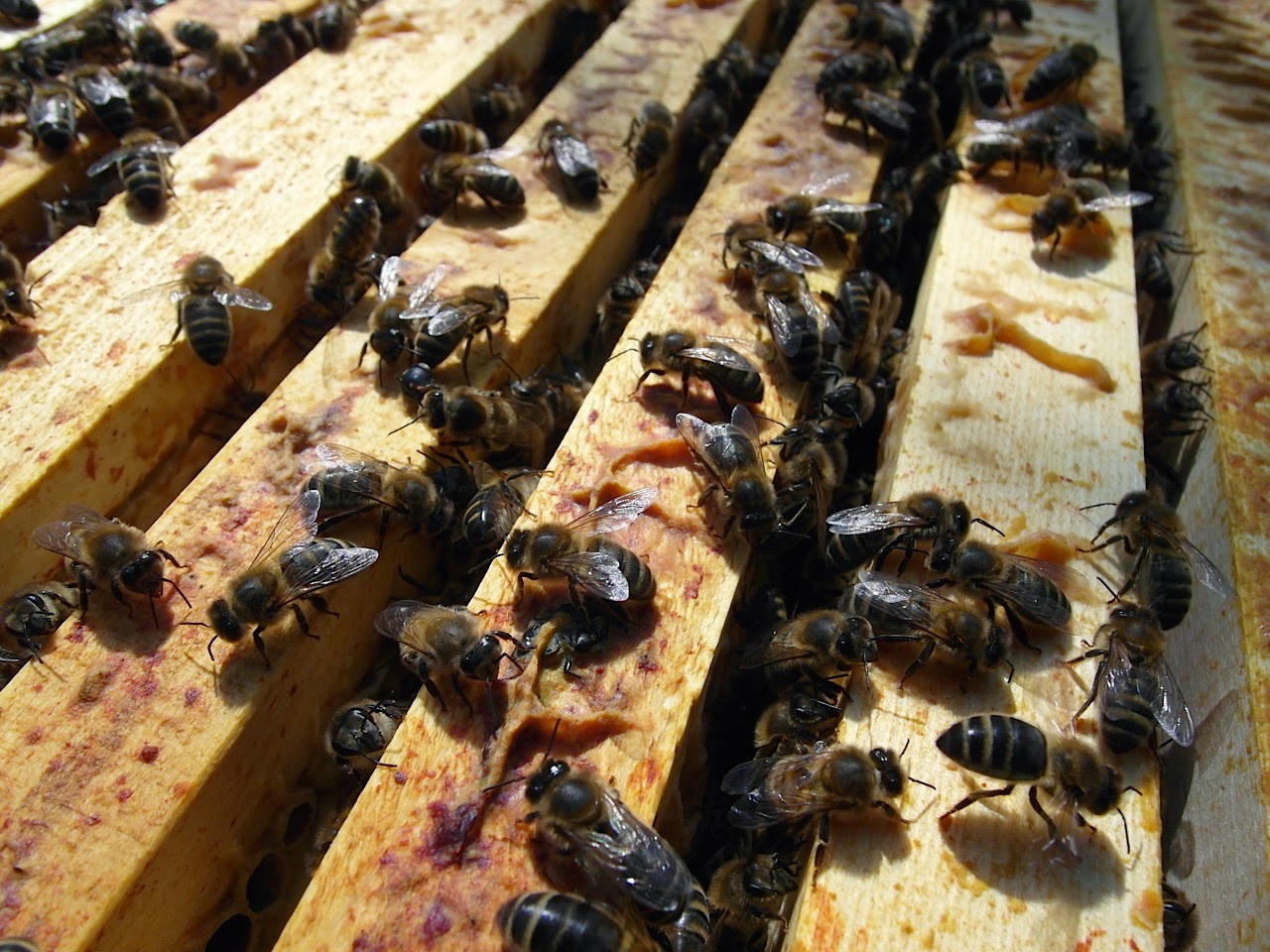Early season swarm control
As I said in my previous post, I'm expecting at the end of May so I'm trying to make preparations now for a swarm free season. Although, you can never predict bee behaviour.
After last year's disastrous attempts of swarm control using just the Beehaus, I decided to invest in a poly hive from Paynes as having two separate hives would make this process a lot easier.
So, last Wednesday I got suited up and ready to go. The swarm control method I was using is called the Nucleus method. You can find it in the BBKA pdf here or if you have the Haynes Bee Manual (which I very highly recommend investing in) there is a good visualisation of the same method. Essentially, it's removing the queen with some of the brood and nurse bees into the new hive leaving behind the flying bees.
It was fairly straightforward to do. Unfortunately, I don't have any photos of the actual happening. I was too busy finding the queen and securing her in the poly hive whilst my husband was anxiously trying to assist and panicking that I was going to get stung and forgot to take photos. For those who remember what happened to my face last year after I was stung on the forehead, he didn't want a repeat of that especially as I'm almost eight months pregnant.
It all went to plan and we placed the poly hive in its new location.
I went back today to check on the Beehaus colony. By now they should have made queen cells from some of the eggs. The plan is to keep just one queen cell so that only one queen emerges and destroy the rest. If you have more than one queen cell, there is a possibility that the bees will swarm with her when she hatches leaving behind the remaining queen cell with the rest of the colony.
As far as I could tell, I left only one. Fingers crossed! Now I need to leave that colony alone for 14 days for the new queen to hatch, get mated and start laying.
As for the nuc, I had a look inside and couldn't find the queen although I'm sure she is there. There was a queen cell on one of the frames but I have a suspicion that this may be a supersedure cell. Sometimes the bees want to replace the queen if she is failing. I don't think she necessarily is but this colony has chalk brood, a fungal disease which is a minor disease but I'll keep my eye on them over the coming weeks. This may be a reason why they want to replace her. It's never straightforward with beekeeping ;)
Below are some photos I took today.
 |
| The nuc in the poly hive. Brood and honey stores. I have fed syrup too to encourage them to draw out the comb in the new frames. |
 |
| The bees in the Beehaus. A strong colony. To supress more urges to swarm, I have put a super on to give them more room. |
 |
| Busy bees on top of the frames. |
 |
| I love how bees do this. A chain between frames - think of it as bee scaffolding. |
 |
| Not all the bees were happy to see me as I got a stinger to the finger. Hooray for nitrile gloves. |



Looking good! By the way, how bad is it to get stung while you're pregnant? Would the reaction be any worse?
ReplyDeleteEmily, I don't think it's particularly bad to your baby to be stung while pregnant, especially during the latter stages, but it's the inconvenience to you. The jury's out as to whether Piriton or other anti-histamine is completely safe to take during pregnancy. Being hyper sensitive to bee stings, I'm not sure I can deal with a sting without some sort of pills/cream so the solution is to fully suit up whenever I go out to see them.
DeleteThanks Tanya, useful to know as I may be in the same situation one day!
Delete